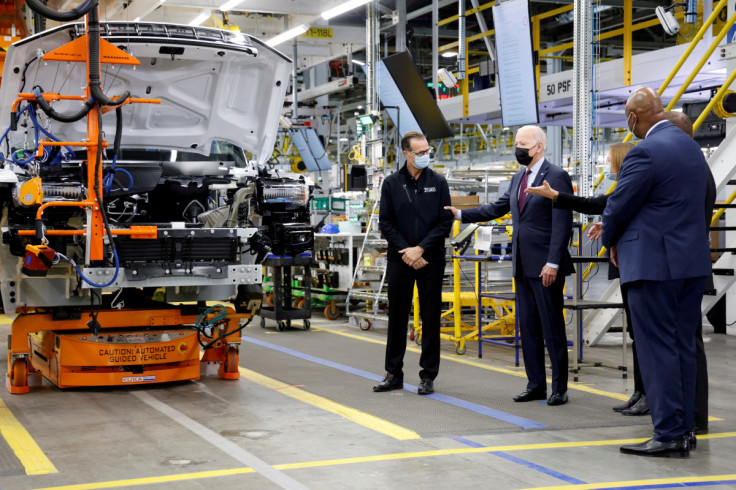New 2023 Tax Credits For EVs

A new tax credit for new and used electric vehicles will be available for buyers in North America.
"It used to be — used to be that to buy an electric car, you had to make all sorts of compromises, but not now," said President Joe Biden in Detroit on Sept. 14 during a speech on EVs. "Thanks to American ingenuity, American engineers, American autoworkers, that's all changing."
Biden originally designed the Inflation Reduction Act to increase EV sales to reduce greenhouse emissions. There's a list of hefty requirements when qualifying for the full $7,500 tax credit. A temporary delay in the Treasury Department's rules will likely allow consumers to take advantage of the relaxed rules within the first two months of 2023. There's also a provision for consumers who buy a used EV, although that is a smaller tax credit.
EV brands eligible for tax credits since 2010 may no longer be eligible due to being manufactured outside of North America. These include KIA, Hyundai and Audi models.
The Treasury Department will issue the rules in March 2023 for full information on who can qualify for the tax credit. There will be caps on vehicle prices and buyer incomes to disqualify wealthier buyers who can purchase an EV without the tax credit.
Aside from the tenuous income and price rules, there are also rules on the types of EVs that can be bought. EVs that qualify for the $7,500 credit include plug-in gas-electric hybrids and hydrogen fuel cell vehicles. If purchasing a used EV, it must run on battery power and a $4,000 tax credit will be available.
There are also provisions regarding battery components and manufacturing, tying into Biden's goal to build a better America. Although these provisions will start in March of 2023, they will strengthen in 2025. The March provisions required that 40% of battery minerals used to manufacture the battery components are required to originate from North America or a country with a U.S. free trade agreement or will be recycled in North America. That number will eventually reach 80% in the future.
Aside from the battery minerals, half of all battery parts will be required to be manufactured or assembled in North America and that number will rise to 100% in the future. Along with those requirements includes a provision that, starting in 2025, battery minerals cannot come from such countries beginning in 2024. This will be a concern for the automotive industry since most EV metals and parts are sourced from China.
These requirements make it unclear which EVs are eligible for the tax credits.
Although 29 EV and plug-in models were manufactured in North America, according to the Energy Department, not all of them will qualify for tax credits due to a combination of price limits and battery-size requirements. New sedan EVs cannot be above $55,000. That price limit is extended to $80,000 for electric pickup trucks, SUVs and vans. Lower-priced models have been advertised and are in production, but the average price of an EV is still over $65,000 with basic options.
© Copyright IBTimes 2024. All rights reserved.





















